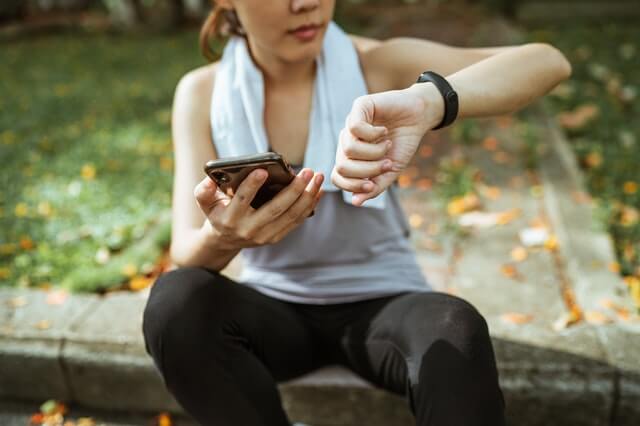From fitness bands to smartwatches, the growing vogue of wearable devices has been one of the significant technology trends in recent years. With the evolution of products like the watch, wearables have been at the forefront of consumer technology.
What is wearable technology?
Wearable technology is an intelligent electronic device that can get worn on the body. Wellness enthusiasts around the world are constantly looking for ways to improve their health and enactment. You can use wearable technology to track your advancement. These instruments help you better understand your daily movements. Wearables help you keep track of a variety of things, including heart rate, activity level, step count measurement, respiratory rate, strength level, fatigue.

What are the aspects of wearable technology?
The wearable device counts the number of steps taken each day. They use an accelerometer and an altimeter to measure the distance travelled. It can be considered particularly necessary for athletes or hikers. You can track your steps, so you can track your progress as well.
- Heart rate or respiration rate monitor
The Wearable gets equipped with a heart rate sensor that measures your heart rate. The biosensor can be applied directly to the skin to instantly detect your heart rate. Biosensors are known to detect heart rhythm abnormalities early and may even witness an impending heart attack.
The wearable device can also monitor breathing rate. It will tell you about deviations in breathing rate and the need for rest during training.
This function shows the calories charred while walking. You can also keep track of how many calories you burn per day. You can control your calorie intake, so you can identify any dietary issues or track when your healthiest day of the week is.
Wearable technology can support your set personal fitness goals by telling you when you’re reaching and when you’re not. Setting goals on your fitness tracker will help you take extra initiative to reach your goals.
A feature that allows you to connect your device to your smartphone to track your progress over a long period. Biosensors are applied directly to the skin while providing connectivity. They can use Bluetooth. Bluetooth, once turned on, can sync instantly with apps on your phone. It means all data gets sent to you in real-time. The best part is that all the information gets stored in the application and is effortlessly available when you need it.
It cannot get tracked with a routine “fitness tracker”, but muscle fatigue and muscle symmetry can get monitored using biosensors.
The biosensor can get used to tracking muscle fatigue, so you can efficiently identify excessive muscle tension. It prevents burnout or muscle strain and gives your muscles a chance to get plenty of rest. However, biosensors can also monitor muscle symmetry.
In other words, it means whether the muscles work the same way. It can help make it easier to recognize an injury before it happens.